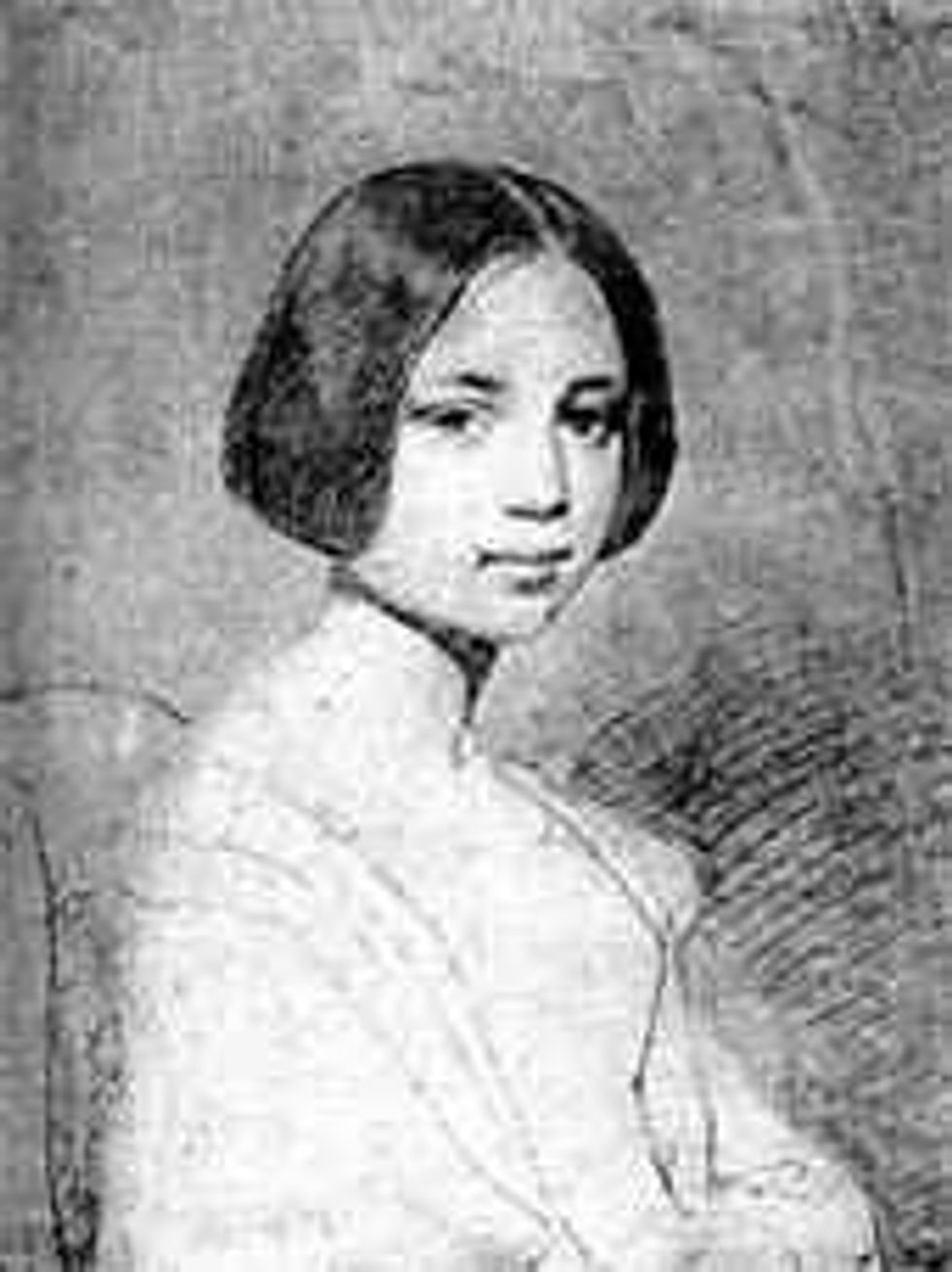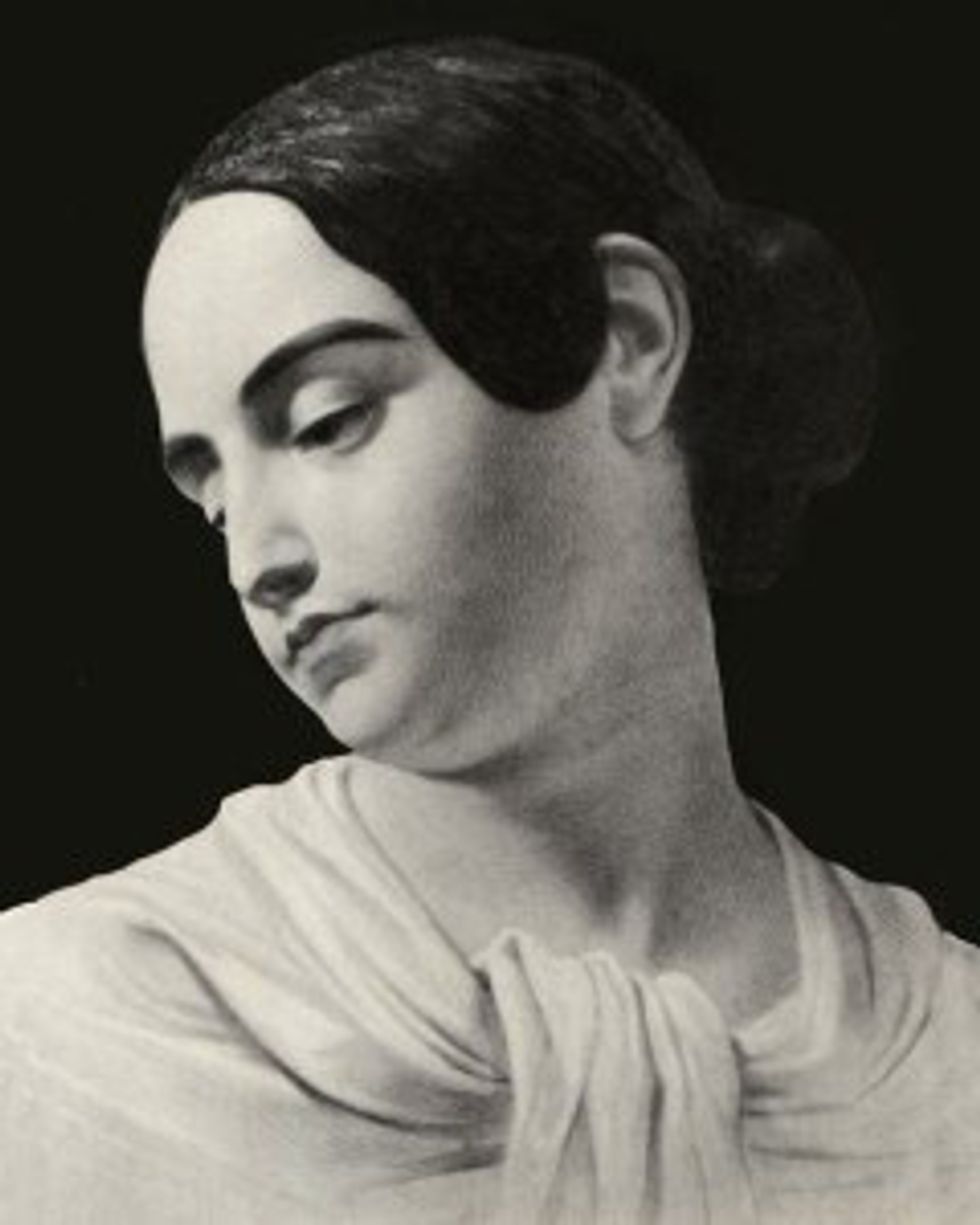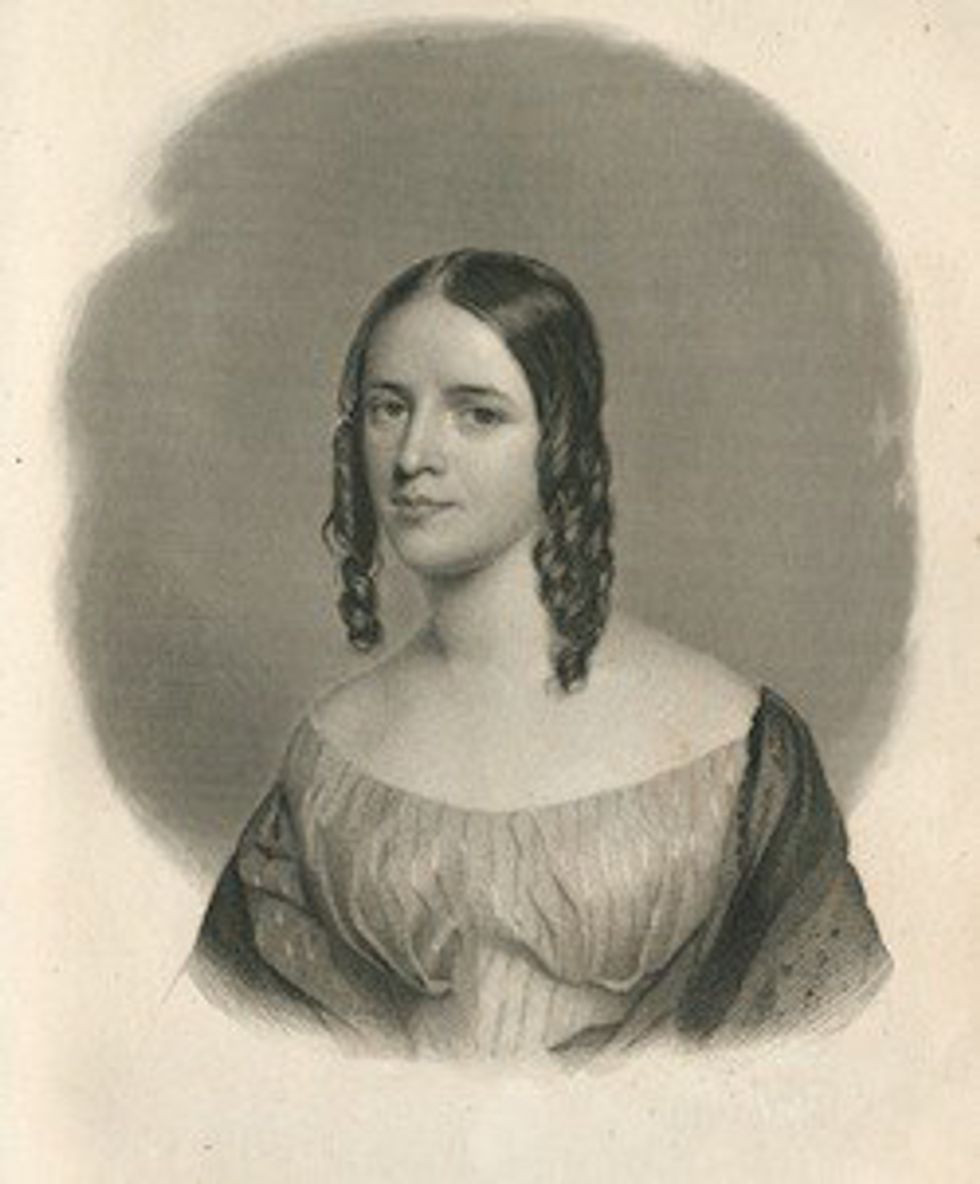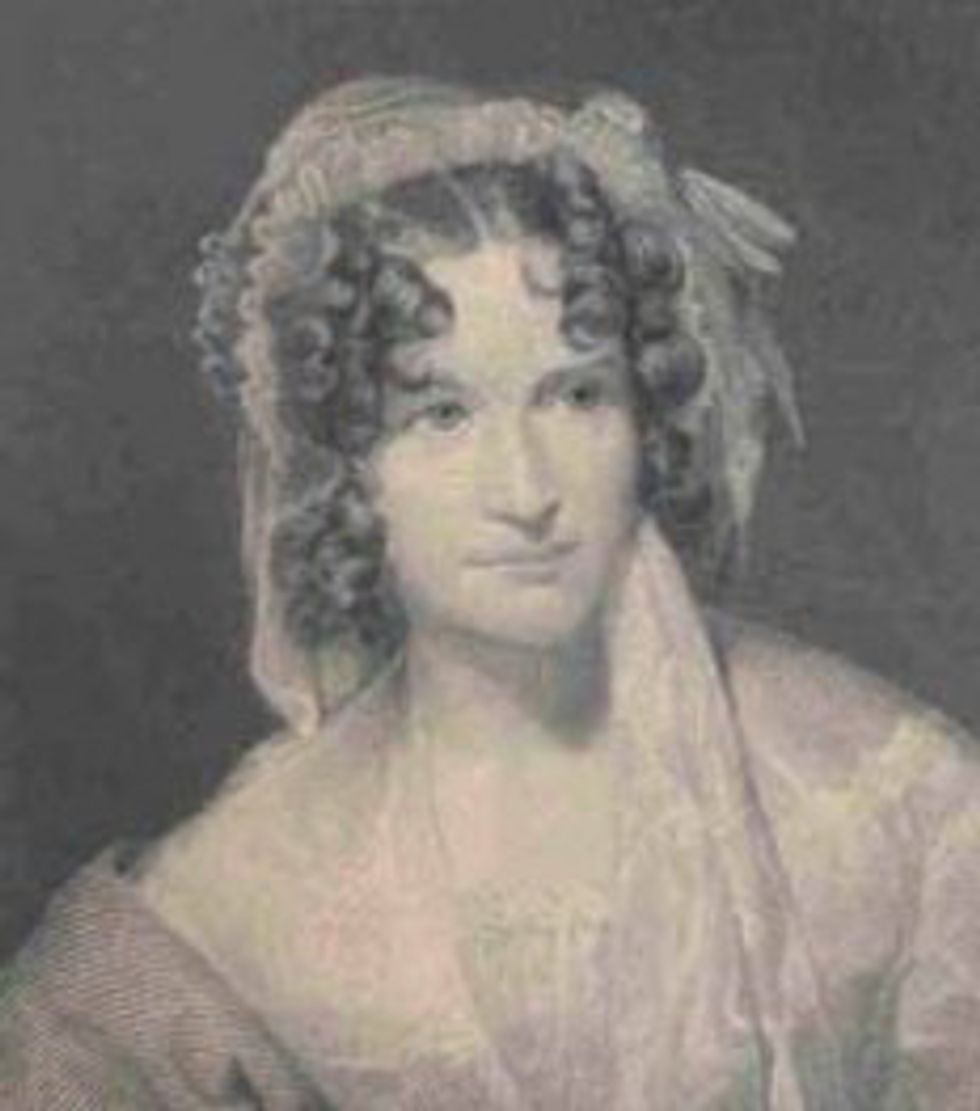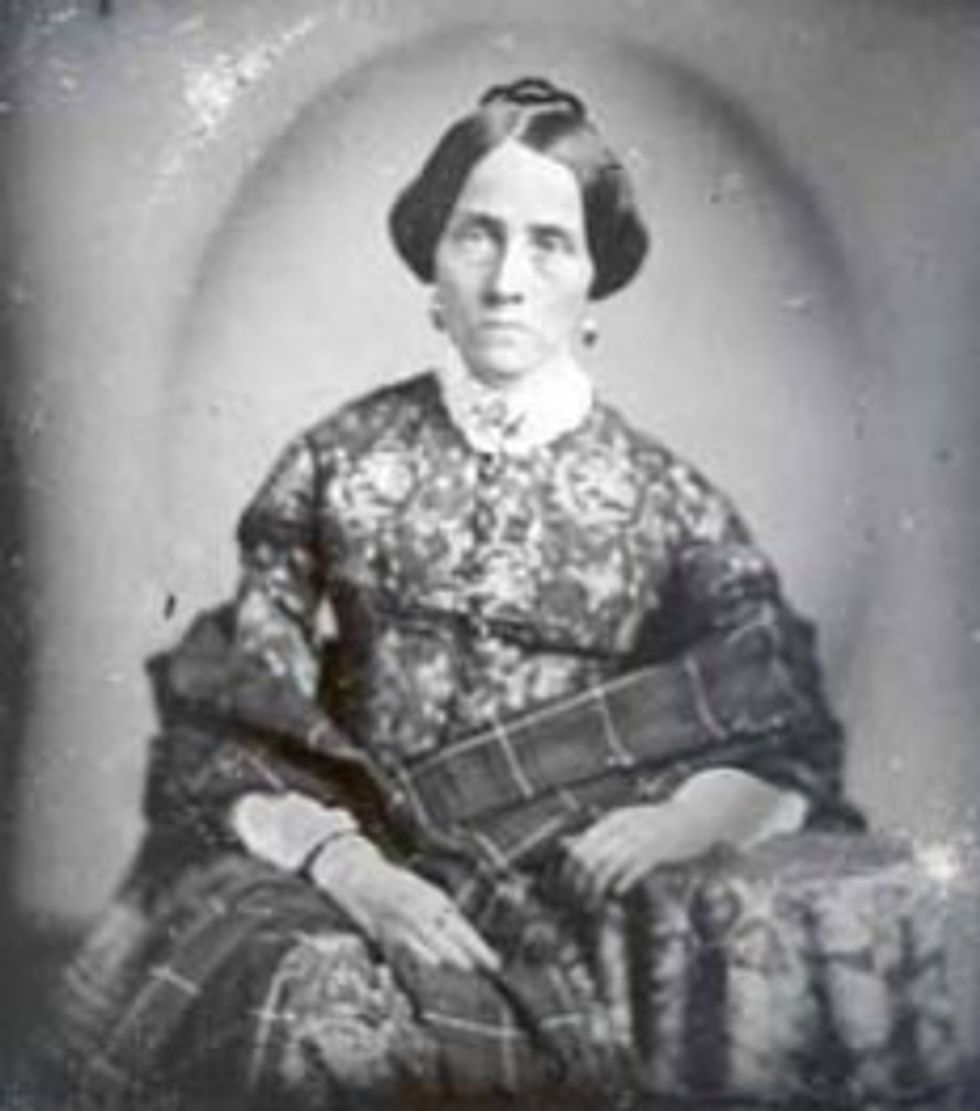Edgar Allan Poe is known for his sorrowful love poems—ravens croaking about Lenore, the bittersweet memory of Annabel Lee, the heavenly woman described in “To Helen”—but who were these women that inspired Poe to write poems and tales of Gothic romance?
Although Poe was only married once—to his first cousin, Virginia Clemm—he was engaged many times both before his marriage and after Virginia’s death. These relationships, whether familial, passionate, or admiring, cannot be understated in their importance in shaping Poe’s outlook on life and thus his poetry. Although they are important in relation to Poe’s writings, these love stories also have their own tales to tell:
1. Engagement to Sarah Elmira Royster
Sarah Elmira Royster lived near Edgar Allan Poe in Richmond, Virginia, where they began seeing each other. The couple’s engagement began in 1826 when both Poe and Royster were in their teens, just before Poe left Richmond to attend the University of Virginia. The two exchanged love letters between Richmond and Charlottesville until Royster’s father discovered and began intercepting Poe’s correspondence. James Royster, Sarah’s father, most likely disapproved of the engagement because Poe was a poor orphan, living in debt to his foster parents, John and Frances Allan. Believing that Poe had purposely stopped writing to her or had otherwise forgotten about her, Sarah married a wealthy businessman named Alexander Shelton. Unaware that his letters had never reached their intended recipient, Poe was heartbroken; in fact, many speculate that Sarah Royster is the “lost Lenore” over whom the narrator laments in “The Raven.” Perhaps, with his former fiancée married to a wealthy man, Poe felt that their love would truly be “nevermore.”
2. Marriage to Virginia Eliza Clemm Poe
Among all of the relationships on this list, Poe and Virginia Clemm’s was the only one that made it to marriage (though Poe would have had that differently!). Virginia Clemm was the daughter of Poe’s biological father’s sister, making the husband and wife first cousins. Although this sort of blood relation in marriages was more common in 1836 than it is now, the marriage was still unusual in that Poe was 27 at the time of their marriage ceremony while Virginia was only 13.
Virginia and Poe first met when Poe came to stay with the Clemms after he was discharged from the military due to his inability to pay his substitute in the Army while he studied at West Point (after having left the University of Virginia because of a similar lack of finances). That was 1829; Virginia was seven years old.
Despite the age difference and Virginia’s youth, the couple had a relatively uneventful, happy marriage (except for a relatively public scandal in the mid-1840s—more on that later). The marriage was uneventful, at least, until Virginia began to show symptoms of tuberculosis in the early months of 1842. As the story goes, Virginia was singing and playing the piano when she began to cough up blood. This was Poe’s first clue that his young wife would eventually succumb to the same disease that took his mother, the disease that inspired his short story “The Masque of the Red Death.” After moving north to Philadelphia, Pennsylvania and then to Fordham, New York in an attempt to aid Virginia’s health, Virginia died of tuberculosis in January 1847, when she was 24.
Although there are questions as to the nature of Virginia and Poe’s relationship—whether it was more familial than traditionally marital—there is no uncertainty that they were devoted to each other. Many of Poe’s poems and short stories tell the story of a loved woman dying young, often believed to be based on his feelings of loss after Virginia’s death (See “Annabel Lee,” “The Oblong Box,” and “Lenore”). Virginia also tried her hand at writing love poems, penning her husband an acrostic, Valentine's Day poem in 1846. From this poem, one can see how well Virginia and Poe complimented each other: Virginia’s poem echoes Poe’s frequent sentiment of wishing to be “Removed from the world” and spending “tranquil hours” with her love, alone.
3. Scandal involving Frances Sargent Osgood and Elizabeth Ellet
In 1845, during his marriage to Virginia, Poe found himself caught up in scandal when Elizabeth Ellet, the first person to write on women’s contributions to the Revolutionary War, discovered love letters and poems written to Poe by Frances Sargent Osgood, one of the most popular American female poets of the time. The situation only became more complex when love letters written by Ellet herself were discovered. The drama is even further heightened when one realizes that all three parties were married at the time.
Although accounts of the scandal vary, a few aspects are known to be true: Both Osgood and Ellet wrote letters to Poe—most likely flirtatious fan letters to the famous writer of the newly published “The Raven”—but Poe returned only Osgood’s affections. He helped Osgood to publish her poems (including “The Rivulet’s Dream” and “Echo-Song”), and wrote her “A Valentine,” in which Osgood’s name is hidden. At some point, Ellet discovered the relationship between Osgood and Poe and publicly called them out for the apparent impropriety. She even began sending the ill Virginia anonymous letters filled with the socially harmful rumors. These letters distressed Virginia, who had encouraged Osgood and Poe’s friendship, and was close to Osgood herself.
In the midst of this scandal, Osgood asked Poe to destroy the letters she had sent him, hoping to negate the social consequences of the rumors. With the Osgood name already affected by the negative rumors, Samuel Osgood, Frances Osgood’s husband, demanded that Ellet apologizes to his wife. Ellet eventually rescinded the rumors, but also suggested that Poe’s insanity had caused her accusations. This new rumor, that Poe was insane, was then perpetuated through newspapers and by Poe’s competitors.
Osgood eventually rekindled her relationship with her husband, putting the scandal to rest. Poe put the drama behind him, accepting the blow to his reputation, but Virginia never fully recovered. It is even claimed that Virginia, on her deathbed, blamed Ellet for her deteriorated health; the confrontational, anonymous letters had taken their toll.
4. (Mini) Engagement to Sarah Helen Whitman
In the fall of 1848, about a year and a half after Virginia’s death, Poe met Sarah Helen Whitman, a poet, essayist, and early feminist. Sarah Helen’s husband, John Winslow Whitman, a lawyer and literary editor, had died 15 years before; in the meantime, Sarah Helen had thrown herself into Providence, Rhode Island’s Transcendentalist and Feminist circles, meeting and becoming “a Disciple” of Ralph Waldo Emerson and writing essays entitled “The Woman Question” and “Progressive Women and ‘Average Young Men.’” In this last essay, Whitman’s frustration with gender expectations shows its colors as she asks her readers why average young men, “mediocre in intellect, but well-meaning and industrious,” are thought to be “a matrimonial prize worth securing, at any sacrifice of a young woman’s progressive tastes and opinions.” In 1871, Whitman wrote a satire entitled “Woman’s Sphere” for a suffragist event. The poem ends with a playful yet sober call to suffragist activism:
Must she then sit with folded hands and tarry,
Till some fair Sybil tell her “whom to marry?”
Better devote her time toward committees,
To stumping States and canvassing the cities;
Better no more on flimsy fineries dote,
But take the field and claim the right to vote.
Whitman had been a fan of Poe’s work for years before meeting him, and wrote him a “The Raven” inspired Valentine's poem in 1848. In response, Poe wrote his second “To Helen” poem, which describes a moment, years before, when he first saw Whitman in her garden. Whitman and Poe also exchanged letters throughout the second half of 1848 (many of which can be found here, though most of Whitman’s have been lost).
Once the two formally met in person, Poe urged Whitman to marry him. She hesitated, but they were eventually engaged in December. The engagement lasted all of two days. Although both parties had been unsure about the marriage, Whitman was particularly regretful after the engagement and wrote several poems addressed to Poe in the next year before his death and quite a few afterward. A devotee of Spiritualism, Whitman also claimed to have been contacted by Poe’s spirit after his death.
Although an accomplished poet and essayist in her own right, Whitman is now known most significantly as a defender of Poe after his death in October 1849. Poe’s reputation was already suffering before his death, with rumors spreading of his alcoholism and possible lunacy, but respect for Poe could only fall further when Rufus Wilmot Griswold, a well-known enemy of Poe, wrote Poe’s obituary in the New York Tribune under the pseudonym “Ludwig.” After disaffectedly stating, “Edgar Allan Poe is dead,” Griswold coldly noted, “This announcement will startle many, but few will be grieved by it.”
Whitman spent the next several years working to defend Poe’s reputation, eventually publishing her most well-known work in 1860: “Edgar Poe and His Critics” (which can be read here). Justly, then, Whitman is remembered as one of Poe’s greatest defenders.
5) Engagement to Sarah Elmira Royster (Again)
During the summer of 1848, a year after Virginia’s death and a month or two before he met Whitman, Poe visited his first fiancée in her Richmond home. Royster’s husband had died four years before, leaving her and their two children a large estate, where they were living comfortably.
Over the next year, Royster and Poe grew close again—as Poe and Whitman’s relationship progressed and eventually ended—and talked about marrying. Royster was hesitant, though, because her children disapproved of the relationship and her late husband’s will specify that she would lose most of the estate if she remarried. Royster was possibly also uncertain about re-engaging herself to Poe due to his then infamous—but possibly over-exaggerated—alcoholism.
By the end of the summer of 1849, though, Royster and Poe had renewed their engagement from 23 years before and had scheduled their wedding. Poe then left Richmond for Baltimore, where, soon after, he was found incapacitated on a street. Poe died four days later, ten days before his and Royster’s wedding date.
For many years after Poe’s death, Royster denied ever having been engaged to him. Eventually, though, she confessed the truth to Poe’s former doctor. Fittingly, then, when Royster herself died in 1888, her obituary called her “Poe’s First and Last Love.”
Who knew America’s most famous Gothic poet was such a romantic?
Special thanks to The Museum of Edgar Allan Poe in Richmond, Virginia for the inspiration and research help!




